And sometimes, that would be a very, very bad idea. Like when you want to make a soufflé.
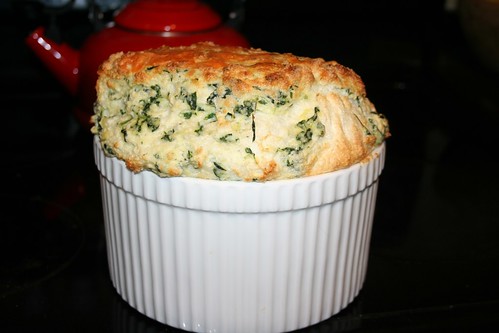
I don't know why I got it in my head to want to make a soufflé. Maybe it just appealed to me as a recipe that inspires culinary fear. All I really knew about a soufflé was that there were a lot of ways to screw one up. I received a copy of Julia Child's Mastering the Art of French Cooking, Vol. 1
You can use the following steps to tackle any major cooking challenge. Regardless of what you are making, the general approach is the same. These sorts of adventures are not for the faint of heart, but they are almost always well worth the effort, and leave you feeling like a kitchen rockstar.
Step #1: Assemble all necessary equipment. In my case, this boiled down to acquiring a soufflé dish -- easily accomplished with a trip to Crate & Barrel. $9.95 later, I own a 2-quart soufflé dish (which is essentially a straight-sided bowl, thus can be used for lots of things and not a dreaded unitasker).
Step #2: Read the recipe. Again. And again. Check and double-check proportions (Julia helpfully gives proportions of ingredients for both a 6-cup and an 8-cup dish). Know the recipe intimately. I really can't stress this step enough, when making something intricate like this. There is no time to clarify your understanding of the process when it is already underway. You can't start blithely beating the eggs before double-checking and discovering you were supposed to separate them first. You really do have to take the time to understand what the recipe is asking you to do, which things will have to be happening simultaneously, etc. This is time well-spent and will save you heartache and frustration later on.
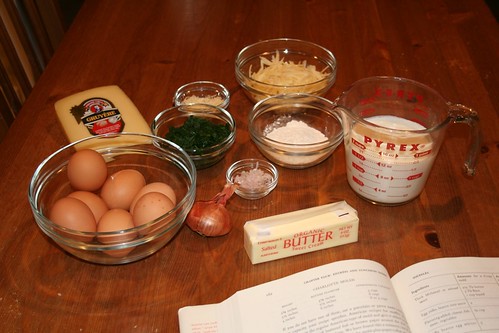
Step #3: Measure out all ingredients before turning on an oven, heating up a pan, anything. Once you have a hot pan demanding your attention, you are off and running. Don't let any outside influences dictate your speed. Take your time, measure everything carefully, and don't really begin until you are prepared. I have a gazillion glass bowls of different sizes that come in very handy with this step. Again, pay attention to things in the recipe like "room temperature eggs."
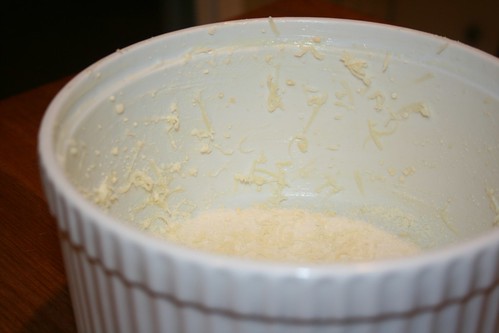
Step #4: Pre-cooking. Many complicated recipes call for ingredients that may take some preparation. This includes everything from chopping vegetables, to melting butter (for all those recipes that call for "melted and cooled" butter), to steaming the spinach and squeezing all the water out before chopping and sautéing with shallots. Anything that can be done and then can wait indefinately for the next stage of the recipe should be done now.
Step #5: Study that recipe again. Assemble every piece of equipment right where you're going to need it. Place each pan on the burner where you're going to use it, and go ahead and pre-heat the oven. Plan out the precise timing of simultaneous and sequential actions. For instance, my soufflé recipe called for the making of a roux, which is then taken off the heat and to which boiling milk is added. So, how long does it take to bring milk to a boil? And how long will it take to melt the butter, add flour, and cook for two minutes? What order are you going to turn on the burners, and to what heat? Figure it out now, you will not have time to wing it later. (In my case, I overestimated the time it would take to boil milk, had to turn down the heat and then bring it back to a boil. Lesson learned for next time.)
Step #6: Go! Hopefully all the pre-measuring and pre-planning will allow to you focus completely on the task at hand, and this kind of cooking will require focus. You've got to pay attention to details like "bubbling" and "stiff peaks" and "not yet browned." This part is the most stressful for me -- woe betide the family member who innocently strolls into the kitchen at this stage. It is also, frankly, exhilarating. This is the buzz, the juice, the adrenaline rush... because here is all the risk, here is where you will either succeed for fail. Scary fun!
This is also where you are most likely to screw up. As everything was perfectly timed and I was grooving right along and maybe getting just a little cocky... I dropped a speck of egg yolk in the whites. Like an idiot, I was separating the eggs right over the bowl that already contained all the carefully separated whites. Now, because I had already read and re-read Julia's essay on soufflés, I knew this was a disaster. A mere drop of egg yolk in the whites can cause them to fail, at which point the entire thing would be a loss. I tried to scoop out the yolk, but I just made it worse. So I took my six carefully-separated eggs, dumped them in a container (they were used for omelets in the morning), and started over with the separating (thankfully I had enough eggs on hand). This time, I took my infinitely wise husband's advice and separated each egg over a small bowl before adding to the collection of yolks and whites -- that way if I messed up again, only one egg would be lost. Damage control. Anyhow, the great egg mishap set me back a full ten minutes in my timing -- things were cooling that were supposed to be hot, I was getting just a wee bit nervous... but it was still worth it to take the time to get it right.
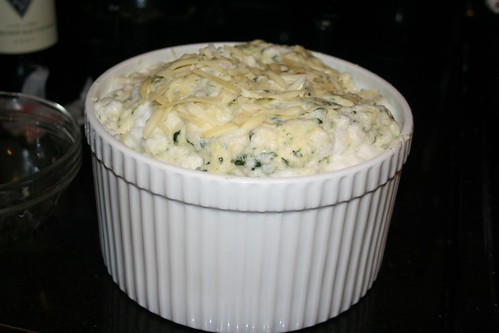
Step #7: Cross your fingers. For me, this was while the soufflé was in the oven. Will it puff up and brown? Will it collapse? Did I fold in the egg whites enough? Did I
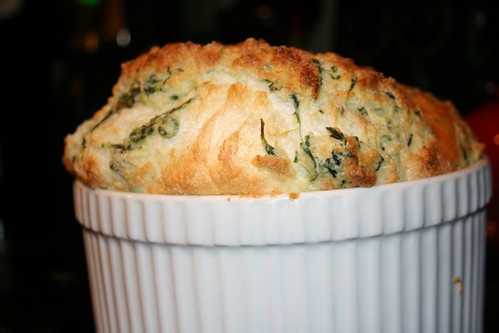
Step #8: Revel in your success, and/or learn from your mistakes. And take notes! A good cook's cookbook will have lots of notes in the margin -- do not trust yourself to remember these things. If you ever decide to take this particular culinary adventure again, you will have the benefit of your own experience to guide you. Priceless! Hands-on experience is the best teacher, bar none.
Beautiful! Julia would be proud!
ReplyDelete